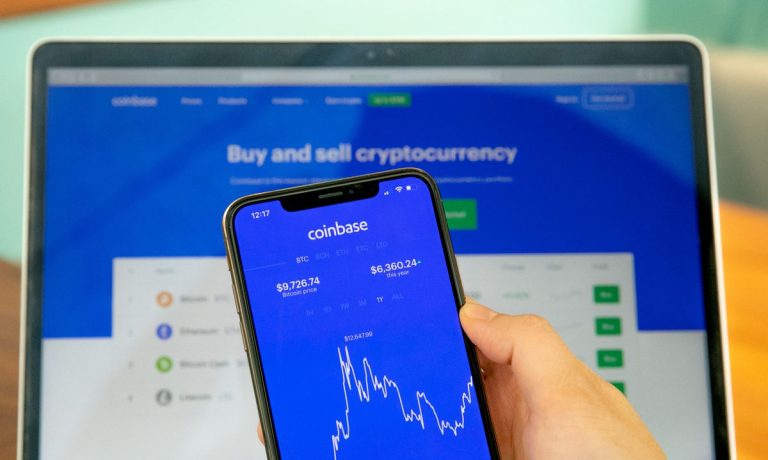
Here’s a pretty fair rule of thumb about quarterly earnings reports: When a company leads with the line from your initial offering prospectus that tells investors “You can expect volatility in our financials,” good news will not follow.
Which is what you’ll find at the top of U.S. cryptocurrency exchange Coinbase’s Q1 2022 shareholders letter, followed by, “Given the price cycles of the cryptocurrency industry, this doesn’t faze us.”
See also: Crypto Crash Dims Coinbase’s Already Low Q1 Expectations
It did, however, faze the stockholders, who had already sent the shares down 80% since the crypto bear market began in November. After the earnings report hit on May 10, the Nasdaq-listed firm’s stock dropped another 15%, landing below $62.
But at below $62 in after-hours trading — compared to $73 when the markets closed, and before the earnings report dropped — Coinbase’s shares are down almost 60% from $154 in the past month, when the broader crypto market melted down to the point where bitcoin dipped below $30,000.
Read more: As Bitcoin Sinks, 40% of FOMO Buyers Find Themselves Underwater
Indeed, CEO Brian Armstrong started out by addressing what he called “the elephant in the room.”
Specifically, “the broader markets are down, we’re seeing down market for growth tech stocks and risk assets,” he said. “And of course, Coinbase and crypto is no exception.”
Burn baby burn
One thing Coinbase does not intend to do is slow spending in 2022. Which brings us to another thing that investors are often not happy to hear from a CEO:
“We are highly confident that we could choose profitability over reinvesting in the business,” Armstrong said. “We believe that investing now is key to our future of becoming a multi-product platform serving a diverse customer base.”
This means big bets on NFTs such as the Coinbase NFT marketplace, which launched in beta in April to reports of underwhelming usage, which Armstrong said was simply a factor of rolling it out slowly.
See here: Coinbase Sees Slow Uptake for NFT Marketplace Test
It also means continuing to expand in India, a potentially huge crypto market, Armstrong said. That quickly turned into a debacle as Coinbase was forced to shut down its access to the National Payments Corporation of India’s popular, central bank-regulated Unified Payments Interface (UPI) — which was a big differentiator when Coinbase India launched on April 7, two days earlier.
Also read: India Boots Coinbase From Payments Interface Days After It Enters Market
“There are elements in the government there, including that Reserve Bank of India, who don’t seem to be as positive” about crypto, despite the Supreme Court forcing the government to reverse what Armstrong said the press has “called a ‘shadow ban.’”
Broadly, however, Armstrong said he was happy with the results, arguing that the company is on track in terms of its goals, and had some bright spots, including positive EBITDA and $7 billion in cash and crypto — about $3 billion of it cash — in the bank.
The important number, from a long-term perspective, is that more than half of Coinbase’s active users — 54% — “are doing something other than just trading crypto, they’re actually using crypto in a variety of ways.”
Follow the wallet
Other focuses will include “big bets on derivatives” — which Coinbase does not currently offer but are huge revenue streams for competitors like Kraken and Binance — as well as an aggressive investment into international expansion and getting more functions and more users to the Coinbase wallet, said CFO Alesia Haas.
“We really do think Coinbase wallet it is the gateway to web3,” Coinbase President and COO Emilie Choi added, referring to a new version of the Internet built on blockchain and focused on removing power from the big tech firms.
See more: Web3: Is There Any ‘There’ There? And If So, Where Is It?
“That’s why we have such a strong belief that making the investment in that is the right thing to do for the long term,” she added.
Which is where Coinbase plans to keep its focus, Armstrong said, waxing philosophical about using a mobile phone and crypto to create a “new, more internet-native, global, fair and free economy for the world.”
That’s a world in which Coinbase “is going to be the primary financial account, the primary way that people access the crypto economy,” Armstrong said. “It’s going to help them not just buy and sell crypto as a brokerage, but also to store crypto and then use it in all of these novel ways.”
Among them: paying for goods and services with the Coinbase Visa debit card, and earning interest — yield, in the industry’s terminology — on crypto assets rather than letting them sit in a wallet. He also mentioned borrowing and lending opportunities, which are currently on hold after the SEC forced the firm to back off Coinbase Lend last year.
See more: Coinbase Kills Lend Product Amid SEC Ire
Armstrong then compared crypto to the late ‘90s/early 2000’s internet boom, suggesting that in another 20 years the crypto economy will make up 15% of global GDP — just like the internet economy does now.
Which is, he implied to investors, worth waiting for.